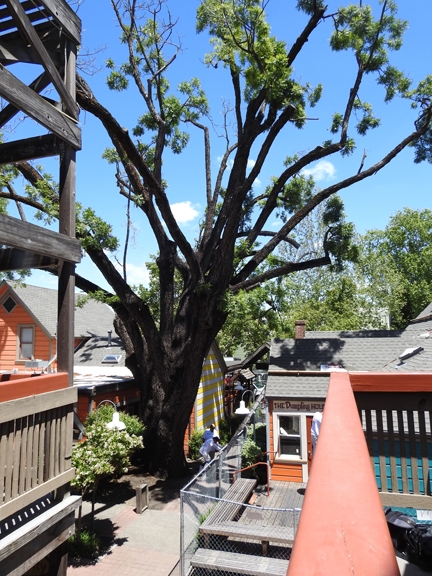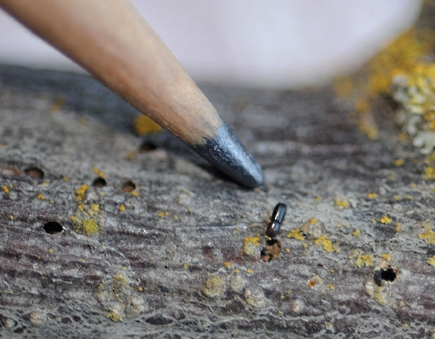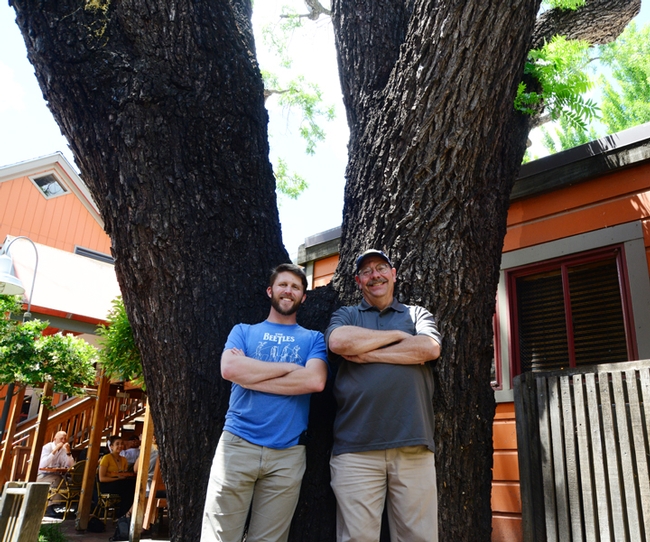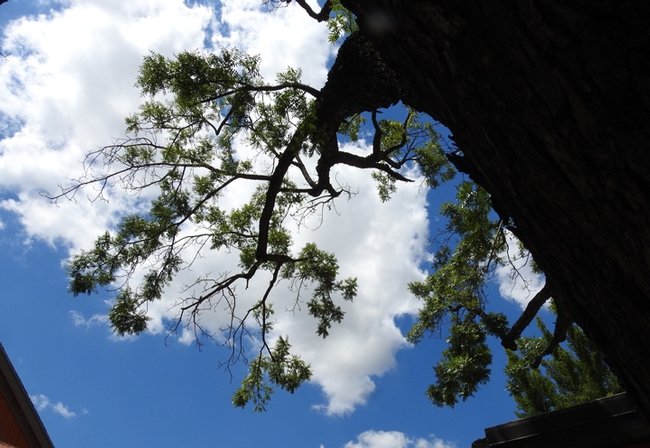- Author: Kathy Keatley Garvey
The article, “Status and Impact of Walnut Twig Beetle in Urban Forest, Orchard and Native Forest Ecosystems,” published in the Journal of Forestry, updates the spread of the disease, and chronicles the role of the bark beetle, Pityophthorus juglandis, and the canker-producing fungus, Geosmithia morbida, in killing walnut trees, especially black walnuts.
Native to southwestern United States and northern Mexico, the bark beetle, about half the size of a grain of rice, “has invaded urban, orchard and native forest habitats throughout the United States, as well as Italy,” said lead author and forest entomologist Steven Seybold of the Pacific Southwest Research Station, USDA Forest Service, Davis, and a lecturer and researcher with the UC Davis Department of Entomology and Nematology.
Walnut twig beetles (WTB) tunnel into branches and trunks of walnut (Juglans) where they create galleries for mating and reproduction. They carry spores of the fungus into their galleries, and the resulting fungal infection causes formation of cankers, which coalesce and girdle branches and stems.
Between 2005 and 2016, the disease killed nearly 60 percent of the 210 specimens of southern California black walnut mature trees in the USDA Agricultural Research Service's National Clonal Germplasm Repository Juglans Collection near Winters, Seybold said. “This is only an estimate and the true proportion of the mortality is likely much higher, as only six of the 210 trees were rated as having healthy crowns in August 2016."
Seybold estimated that the E Street tree is about 150 years old, "maybe older." It measures almost 65 inches or just over five feet.
“The walnut twig beetle is also significant because it is the consummate invasive species; it is small enough to travel under the bark of modest-sized pieces of barked wood and it can withstand relatively dry conditions that it might encounter during transit,” Seybold said. “We believe that it has moved from isolated Arizona black walnut trees along creeks and rivers in the desert Southwest to nearly the entire western USA wherever walnut trees of any species have been planted or grew naturally. It has also been transported to Europe and established significant populations in Italy.”
Seybold noted that the disease is “unique because of its multifaceted negative impact on walnut trees involved in landscaping, food production, and forestry. Walnut trees are valuable ecologically and for food and timber, so the walnut twig beetle is a good model in which to study the impact of a bark beetle on forest and agro-ecosystem services.”
Other co-authors are Professor William Klingeman III of the Department of Plant Sciences, University of Tennessee, and forest entomologist Tom Coleman with the USDA Forest Service's Southern Region, Asheville, N.C..
UC Davis doctoral student Jackson Audley of the Seybold lab, who is researching an ensemble of behavioral chemicals that repel the walnut twig beetle from landing on English walnut trees, contributed photos of dead and dying walnut trees in the Davis area. Audley conducts his research in a commercial orchard near Winters. UC Davis doctoral student Corwin Parker and Hishinuma also provided images of deteriorating walnut trees.
“WTB is one of a few invasive bark beetles in North America where expanding distribution and impact have been pronounced enough to affect other species, communities, and ecosystems to the extent that services provided by urban forests, agroecosystems, and wildland areas have been altered,” the co-authors concluded in their paper. “We envision that ecological impacts of WTB will continue to unfold across a wider geographic area to affect various types of key services, i.e., provisioning (e.g., timber and nontimber products); regulating (e.g., air and water quality/quantity, climate regulation); and cultural (e.g., recreation, aesthetics, shade) services.”
Scientists first collected the beetle in North America in 1896 in New Mexico, 1907 in Arizona, 1959 in California, and 1960 in Mexico, but never considered it a major pest of walnut trees until black walnuts began deteriorating and dying in New Mexico in the early 2000s. Walnut tree mortality that occurred in the early 1990s in the Wasatch Mountains of Utah and in the Willamette Valley of Oregon is now attributed to TCD.
“Currently, good cultural practices and sanitation of infested materials are the primary strategies for disease management within orchards and also for prevention of spread of the disease and vector to regions with low rates of infection,” according to the UC Statewide Integrated Pest Management Program (UC IPM)>
UC IPM recommends that trees with less than 50 percent live crown be removed to reduce the buildup of walnut twig beetles and inoculum in the trunk and larger scaffold branches. "Chemical control with either fungicides or insecticides is not recommended for management of thousand cankers disease," UC IPM says.






